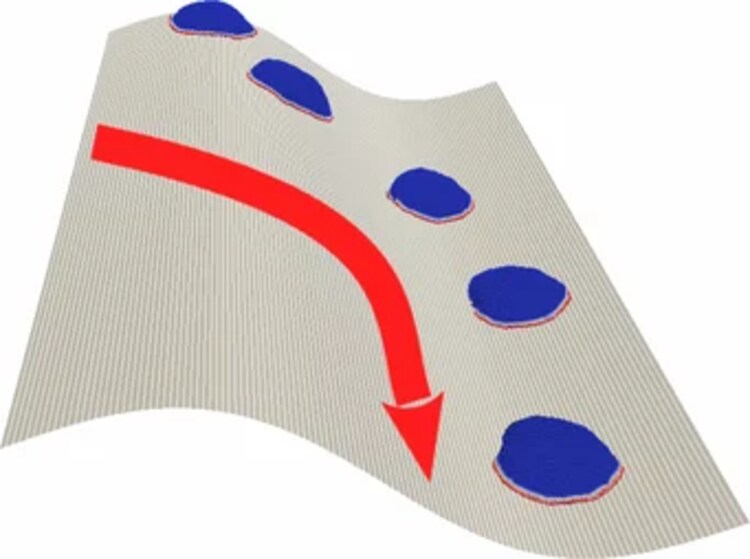German-built model uncovers the secrets of nature's curvature, how it relates to the migration of cells

This research has the potential to broaden scientific horizons and inspire discoveries
Scientists at the Max Planck Institute for Dynamics and Self-Organization (MPI-DS) and the Weizmann Institute of Science have conducted a groundbreaking study on how cells navigate curved surfaces. The research involves a model that has unraveled the complex behavior of cells, offering new insights into immune cell dynamics and cancer metastasis. The study has revealed that surface curvature plays a pivotal role in influencing cellular movement patterns, which is known as "curvotaxis."
Cell migration is a fundamental biological process, necessary for immune cells to search for pathogens and cancer cells that spread via metastasis. The human body has numerous surfaces with unique curved shapes, such as blood vessels, tissues, or protrusions. The team developed a model simulating a vesicle, which mimicked the migration patterns of cells in the human body. The model showcased specific migration patterns, illustrating how cells preferentially move along grooves or valleys while avoiding motion along ridges or projections.
The findings of this research present a universal mechanism for cell motility that is applicable across several types of migrating cells. On convex or tubular structures, such as the outer surface of blood vessels, cells tend to move circumferentially around the curvature. Conversely, on concave structures inside blood vessels, axial forward or backward movement dominates.
Beyond its contributions to biological understanding, this research showcases the pivotal role of computer models in unraveling the mysteries of cellular behavior. The ability to simulate and predict the migration patterns of cells based on surface curvature opens up new vistas for research into immune response mechanisms and cancer treatments.
The multinational collaboration between researchers from the Max Planck Institute and the Weizmann Institute of Science demonstrates the power of scientific cooperation and the impact it can have on advancing our understanding of complex biological processes. As the scientific community delves even deeper into the intricate workings of curvotaxis and other cellular phenomena, the potential applications for these discoveries are vast. From designing more effective drug delivery systems to developing new treatment strategies for cancer metastasis, the insights gained from this innovative computer model are sure to revolutionize the field of cellular biology.

 How to resolve AdBlock issue?
How to resolve AdBlock issue?